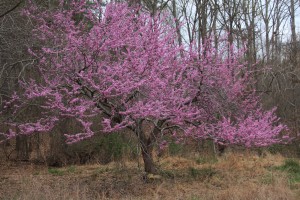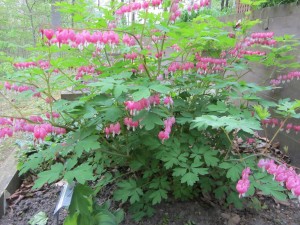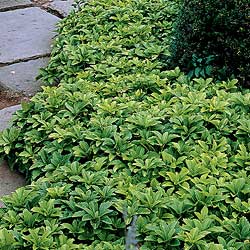As springtime slowly fades into summer, trees begin to fill in and you will notice your yard becoming shadier. It can seem difficult to find plants, especially flowering ones, that tolerate shady environments. There is however a plethora of choices from groundcover, to perennials, to shrubs and trees. Finding shade tolerant plants can be easier than you think!
Before choosing specific plants first decide what type of design or atmosphere you are striving for. This can help narrow your options on plant types later on. These could range from natural to clean cut and simple, full of color or more monochromatic, and looking to gain seasonal interest.
 Once this is decided you are ready to choose some plants! First it is best to decide on larger shrubs and trees. Good choices of trees for shade are Eastern Redbud, Allegheny Serviceberry, American Hornbeam, Paper Birch, European Beech, Pawpaw, Sweetbay Magnolia, Hemlock, and the Red or Sugar Maple. Shade tolerant shrubs include Hydrangeas, Gray Dogwoods, Witchhazel, multiple Viburnum species, Bottlebrush Buckeye, Azaleas, Rhododendrons, Red Chokeberry, or Virginia Sweetspire. Evergreens such as Boxwoods and Yews can tolerate part shade as well and add winter interest as well.
Once this is decided you are ready to choose some plants! First it is best to decide on larger shrubs and trees. Good choices of trees for shade are Eastern Redbud, Allegheny Serviceberry, American Hornbeam, Paper Birch, European Beech, Pawpaw, Sweetbay Magnolia, Hemlock, and the Red or Sugar Maple. Shade tolerant shrubs include Hydrangeas, Gray Dogwoods, Witchhazel, multiple Viburnum species, Bottlebrush Buckeye, Azaleas, Rhododendrons, Red Chokeberry, or Virginia Sweetspire. Evergreens such as Boxwoods and Yews can tolerate part shade as well and add winter interest as well.
Next choosing perennials can be tricky but don’t fret there are a variety to choose from. A great perennial that does very well are Hostas. There also are Coral Bells or ferns. Each comes in a variety of colors and sizes. For more flowering perennials there are Astilbes that come in pinks, reds, and whites, Columbine, Brunnera, Lungwort, Blue-Eyed Grass, Jacob’s Ladder, Anemone, Bleeding Hearts, Barrenwort, and Lobelia.
Last, filling in with groundcover can bring any design together to look complete. Good groundcovers for shade include Japanese Pachysandra which does well in moist shady areas, Wild Ginger, Plumbago, Lily of the Valley, Lily Turf, Ajuga, or Red Epimedium.
Don’t let shade scare you away from creating a beautiful design. These are only some potential shade tolerant plants. Don’t let this list dictate your personal plant palette.
By: Hannah Lintner


